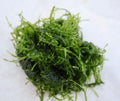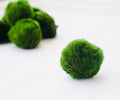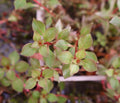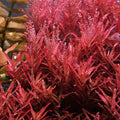Reasons Your Aquatic Plants Turn Brown
Aquarium plants can provide a beautiful and natural aesthetic to your aquarium, but when they start turning brown, it can be frustrating and concerning for aquarists. There are several reasons why aquarium plants can turn brown, including water quality, lighting, and nutrient deficiencies. In this article, we will explore these factors in detail and provide tips on how to prevent and treat brown aquarium plants.
Water Quality
Water quality is one of the most important factors that can impact the health of aquarium plants. Poor water quality can lead to nutrient deficiencies and stunted plant growth, which can result in brown or yellowing leaves.
To prevent brown aquarium plants due to water quality issues, it is important to maintain proper water chemistry. Regular water changes, testing for ammonia, nitrite, and nitrate levels, and ensuring the pH and hardness levels are within the appropriate range for your plant species can help prevent nutrient deficiencies and promote healthy plant growth.
Lighting
Lighting is another key factor that can impact the health of aquarium plants. Too much or too little light can cause leaves to turn brown or yellow.
To prevent brown aquarium plants due to lighting issues, it is important to ensure that your aquarium is receiving the appropriate amount of light for your plant species. Different plants have different lighting requirements, so it is important to research your specific plant species and adjust your lighting accordingly. Additionally, it is important to regularly clean your aquarium light fixtures and replace bulbs as needed to ensure they are functioning properly.
Nutrient Deficiencies
Aquarium plants require a variety of nutrients to grow and thrive, including nitrogen, phosphorus, and potassium. A lack of these nutrients can result in brown or yellowing leaves and stunted plant growth.
To prevent brown aquarium plants due to nutrient deficiencies, it is important to regularly fertilize your aquarium plants with a balanced fertilizer that contains all the necessary nutrients. Additionally, adding root tabs or liquid fertilizers can help ensure that your plants are receiving the nutrients they need.
Treating Brown Aquarium Plants
If your aquarium plants have already turned brown, there are several steps you can take to treat the issue. First, identify the underlying cause of the brown leaves and make the necessary adjustments to prevent further damage. Additionally, you can prune any brown or damaged leaves to promote healthy new growth.
Why do my plants’ leaves have holes in them?
If the leaves of your aquarium plants have holes in them, there may be a number of problems that could be present:
Nutritional Deficiency: A deficiency in vital elements like nitrogen, potassium, or iron can result in holes appearing on plant leaves. Your plants' leaves may begin to deteriorate and form holes if they are not receiving enough of these nutrients. Make sure your plants are receiving the proper quantity of nutrients, and think about giving your aquarium some liquid fertilizer.
Pests: Some pests, like snails or insects, are able to gnaw holes in the leaves of plants. Examine your plants for pest activity and apply the appropriate treatments. Examine your plants for pest activity and apply the appropriate treatments. To reduce the number of pests, you can also try putting a natural predator in your aquarium, like a fish or shrimp that eats snails.
Water Quality: Plant leaves might develop holes due to poor water quality. Verify the water parameters, including pH and hardness, are within the allowed range for your plants and that your aquarium has been cycled appropriately. To enhance the quality of the water, you can also think about adding salt for aquariums or a water conditioner.
Physical Damage: Physical damage, such as hard handling during shipment or aquarium care, can occasionally result in holes in plant leaves. To avoid damage from fish or water flow, take care while handling your plants and make sure they are firmly attached in the bottom.
Your aquarium plants can remain strong and healthy by determining and treating the root of any holes in their leaves.
Conclusion
Aquarium plants can provide a beautiful and natural element to your aquarium, but it is important to ensure that they are healthy and thriving. By paying attention to water quality, lighting, and nutrient deficiencies, you can prevent brown aquarium plants and promote healthy plant growth. If your aquarium plants have already turned brown, identifying and addressing the underlying cause can help restore them to their vibrant and healthy state.
















